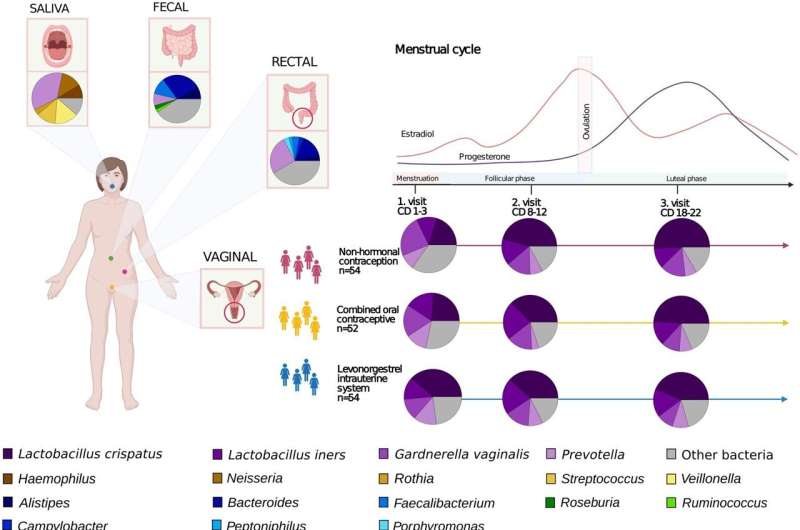New findings in the vaginal microbiome

A new study published in Human Reproduction shows that the menstrual phase has effects on the microbiome. "This will be very important for planning future studies, both in basic science and for interventions aiming to improve the vaginal microbiome," corresponding author Ina Schuppe Koistinen at the Department of Microbiology, Tumor and Cell biology at Karolinska Institutet, says.
The use of oral contraceptives or intrauterine system has not been associated with the microbiome composition or diversity. In this new study however, an increased diversity with more bacterial species, is observed during menses. During the follicular and luteal phases, the study shows that there is an expansion of the proportion of Lactobacillus, which are considered the most healthy species in the vaginal microbiome. It also correlates with measured serum oestradiol levels. During menses, 58% of the women have a suboptimal vaginal microbiome, but it declines to 32% in the follicular phase, down to 29% in the luteal phase.
The bacterial diversity in saliva is lowest during menses, and no differences were found for the fecal microbiome. Only the vaginal microbiome presents a clear cluster structure with dominance of one out of four bacterial taxa: Lactobacillus crispatus, Lactobacillus iners, Gardnerella vaginalis or Prevotella spp. The other body sites showed all possible mixtures of bacteria. Comparing samples from the same individual with samples from other individuals, the microbiome is more similar within the same person, despite the effects of menstrual cycle or hormonal treatment.
"The human microbiome has been implicated in many different areas of medicine, from cancer to psychiatric disorders. Knowing that very commonly used contraceptives do not affect the microbiome is a positive finding," Ina Schuppe Koistinen says. "The vaginal microbiome in particular has also been connected to many gynecological outcomes, such as STI acquisition, the development of cervical cancer and likelihood of pregnancy following IVF. For this field, knowing that the menstrual phase has a major effect on the microbiome will be very important for planning future studies, both in basic science and for interventions aiming to improve the vaginal microbiome."
More information: Maria Christine Krog et al, The healthy female microbiome across body sites: effect of hormonal contraceptives and the menstrual cycle, Human Reproduction (2022). DOI: 10.1093/humrep/deac094




















